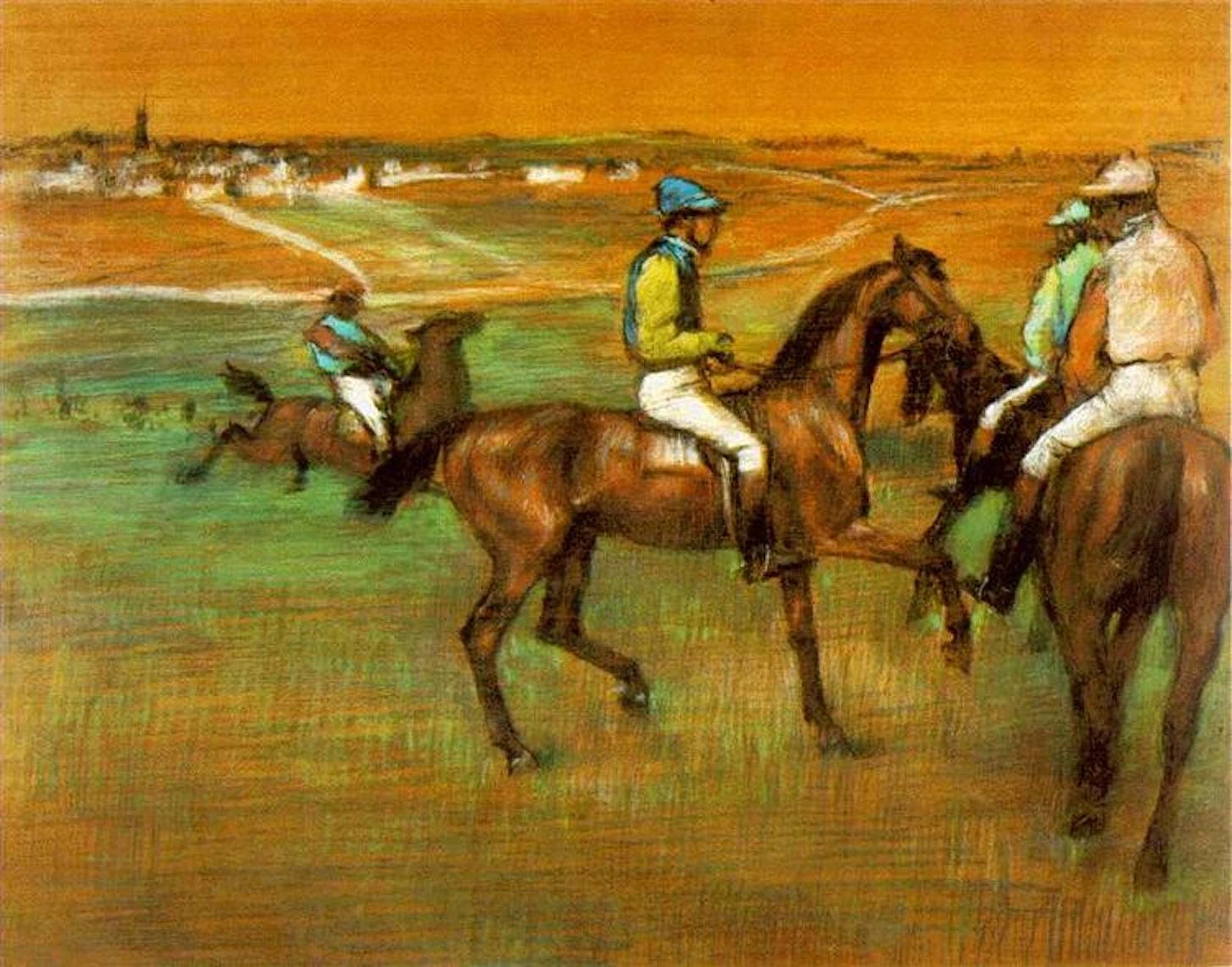The Wisdom of Art
Today’s meditation is an introduction to a new series I’m calling — The Wisdom of Art. We aim to explore art and poetry to live our highest good. As Leonardo da Vinci observed, “Painting is poetry that is seen rather than felt, and poetry is a painting that is felt rather than seen.”
In her book The Joy of Art, Carolyn Schlam explains,
Great masters make it seem easy, but they know more than anyone that making art is not easy at all. The nature of visual art is such that we only get to see the last few moments in a very long story, and the final work appears to have sprung to life like magic.
The French Impressionist artist Edgar Degas (the artist of Race Horses above) said, “Art is not what you see, but what you make others see.” The artist gives us the tools to see; they help us to open our eyes and minds to a new reality.
What makes a work of art a masterpiece?
According to Schlam, “A masterpiece often leads a path to something new or magnifies an element that makes us see in a new way. It is a visionary experience.” Although a masterpiece is an exceptional work with exceptional skill, it is also much more. A masterpiece is a work that stands out among the works created in that time by that artist, and in that manner, as a work that transcends its time.
Patience and Art
In my conversation with Oliver Burkeman (author of Four Thousand Weeks), he told the story of partaking in an exercise inspired by Jennifer Roberts, an art history professor at Harvard. When you take a class with Roberts, your initial assignment is always the same: choose a painting or sculpture in a local museum, then go and look at it for three hours straight.
Burkeman describes the experience this way,
Keep reading with a 7-day free trial
Subscribe to Perennial Meditations to keep reading this post and get 7 days of free access to the full post archives.





